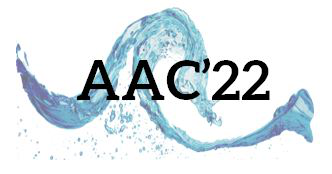Speaker
Description
It has been recently shown that a high-current ultrarelativistic electron beam can undergo strong self-focusing due to the Near-Field Coherent Transition Radiation (NF-CTR) emitted when interacting with multiple submicrometer-thick conducting foils [A. Sampath et al., Phys. Rev. Lett. 126, 064801 (2021)]. Particle-In-Cell simulations show that this self-focusing phenomenon is accompanied by efficient emission of gamma-ray synchrotron photons, leading to femtosecond collimated photon beams with number density exceeding that of a solid. Yet, this scheme requires beam parameters that have not been experimentally achieved in an accelerator facility. In this talk we will present a study, based on analytical models and PIC simulations, that shows that with realistic beam parameters (such as the nominal beam parameters of FACET-II) we can achieve strong electron beam self-focusing in beam-multifoil collisions as well as to convert more than 10% of the beam energy into gamma rays.
Furthermore, the relative simplicity, unique properties, and high efficiency of this gamma-ray source open up new opportunities for both applied and fundamental research including laserless investigations of strong-field QED processes with a single electron beam. This talk will present the results of a simulation study that shows the potential of the NFCTR process to reach EM fields exceeding the Schwinger field strength in the electron rest frame, thus creating electron-positrons pairs that could be experimentally measured [A. Matheron et al., arXiv:2209.14280]. We will discuss several physical processes taking place during the beam-plasma collision such as field ionization when starting from a solid foil, plasma transparency when the bunch length is too small, excitation of a blowout cavity in the bulk of the plasma for overdense electron beams, and the influence of the beam shape on the reflection process.

